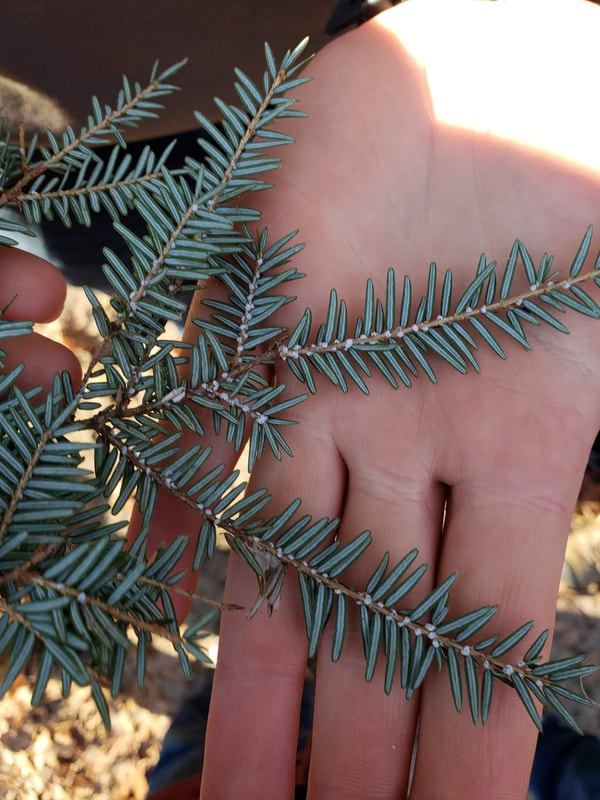Hemlock Woolly Adelgid
What is Hemlock Woolly Adelgid?Most residents of northern Michigan are familiar with emerald ash borer – an invasive insect that arrived in our state, resulting in the widespread die-off of millions of ash trees. Forests once full of this large, native tree are now stocked with dead snags and state-wide quarantines are still in place preventing the spread of wood material from one place to another. Unfortunately, another invasive species is knocking at our front door, this time targeting a critical habitat species – our hemlocks. The photos emerging from the Appalachian Mountains are stunning. Entire swaths of forest appear to be brown as dense hemlock stands become fatalities to the hemlock woolly adelgid (HWA). Originally from Asia, but now established in the eastern U.S. and moving west, this aphid-like insect can be hard to spot, but they situate themselves at the base of hemlock needles and feed off the trees’ nutrient supply, eventually resulting in mortality. Luckily, unlike with Michigan’s ash trees, this mortality is more gradual – often taking five to ten years. This allows natural resource professionals to work toward saving this crucial hemlock resource.
If you are interested in learning more, please watch ISN's
HWA webinar on YouTube. How is ISN Involved?The Northwest Michigan Invasive Species Network (ISN), operating with funds from the Michigan Invasive Species Grant Program (via the Mason Lake Conservation District) has been working to stay ahead of HWA since fall of 2018. With a population of HWA identified in northern Benzie County, within ISN's service area (2021), it is critical to tackle this issue head-on. Any invasive insect can have devastating outcomes, but hemlock is a particularly special component of northern Michigan’s forest ecosystem. They provide essential habitat for many forms of wildlife and because of where they tend to grow (i.e. along rivers), they offer shade that is crucial to the health of our fisheries.
In 2018, ISN and regional partners, using guidelines set by the State of Michigan HWA task force, worked together to establish a map that narrowed down areas that were expected to be denser with hemlock – following the current trajectory of HWA movement in Michigan. Winter surveys took place to minimize any potential spread of the invasive and because it is easier to locate the woolly mass of HWA ovisacs underneath hemlock needles. ISN’s focus was on easier-to-access locations such as public land and conservation easements. The following winter, the focus shifted to private land and that goal continues as we enter the 2023 season. |
If your home or land falls within the below parameters, you are encouraged to complete a landowner survey! Homeowner Associations are also welcome to participate.
If you have questions, please contact ISN Invasive Species Specialist, Zach Seguin: [email protected] Do You Qualify For a Site Visit?
If your home or land falls within the listed parameters, you are encouraged to fill out the below landowner form:
|
How Can I Get Involved?
|
The Eyes on the Forest program through MSU Extension has created a portal for the public to report any HWA surveys they perform. Whether you're out walking on public lands or combing every tree on your own property, sharing your findings (including "nothing found") is a great way to bolster community (formerly citizen) science efforts. The information you provide enables ISN and experts across the state to make better management decisions and to respond quickly if HWA is suspected.
|





